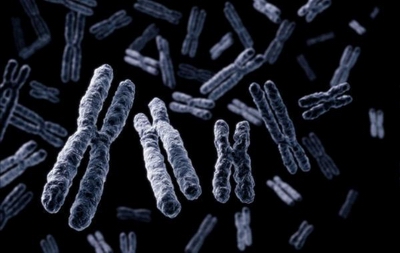日志
持家基因(house-keeping genes)
|
分子杂交等大量实验表明,在细胞的全套基因组中,只有少数基因(5-10%)表达。基因组中表达的基因分为两类:⑴一类是维持细胞基本生命活动所必须的,称管家基因(house keeping gene),如各种组蛋白基因。;⑵另一类是指导合成组织特异性蛋白的基因,对分化有重要影响,称奢侈基因(luxury gene),即组织特异性(tissue-specific gene)表达的基因,如表皮的角蛋白基因、肌肉细胞的肌动蛋白基因和肌球蛋白基因(按照严谨的说法,其实这两种蛋白基因应该属于持家基因)、红细胞的血红蛋白基因等。这类基因与各类细胞的特殊性有直接的关系, 是在各种组织中进行不同的选择性表达的基因。
加利福尼亚大学分子遗传中心和圣地亚哥医学院的一项研究表明,一种叫HPRT的基因对促使人类原始细胞转变成大脑正常的神经细胞的过程具有重要的作用。这种代谢基因就是总所周知的管家基因(housekeeping genes)。这项研究结果发布在Molecular Therapy杂志的在线版本上。
很多情况下,大部分细胞中的管家基因都是表达的。这些基因简单的代谢功能可以调控正常的代谢,或者说在基因没有起到合适作用时会导致严重的疾病。但是目前还没有关于这种基因与通路形成的关系的研究,通路决定干细胞和其他的原始细胞变成神经细胞,肌肉细胞,骨细胞或血细胞。
研究表明,HPRT承担了一个重要的新角色,即会导致路径中错误的产生,结果使得大量转录因子基因表达时高时低,而且许多表达是错误的。此外,在除了HPRT的许多其他的管家基因中,同样发现了一些基因可以调控正在形成的重要通路。
科研人员还对HPRT基因做了直接的试验证实,通过对莱施-尼汉疾病(Lesch Nyhan disease)严重神经紊乱的形成研究,表明HPRT基因确实可能导致神经学上的问题。而这些问题会直接影响出生和神经元的功能,尤其是对多巴胺依赖的神经传导神经元。(生物谷Bioon.com)
生物谷推荐原始出处:
Molecular Therapy (2009); doi:10.1038/mt.2009.178
Deficiency of the Housekeeping Gene Hypoxanthine–Guanine Phosphoribosyltransferase (HPRT) Dysregulates Neurogenesis
Ghiabe-Henri Guibinga1, Stephen Hsu1 and Theodore Friedmann1
1 Department of Pediatrics, Center for Molecular Genetics, University of California, San Diego School of Medicine, La Jolla, California, USA
Neuronal transcription factors play vital roles in the specification and development of neurons, including dopaminergic (DA) neurons. Mutations in the gene encoding the purine biosynthetic enzyme hypoxanthine–guanine phosphoribosyltransferase (HPRT) cause the resulting intractable and largely untreatable neurological impairment of Lesch–Nyhan disease (LND). The disorder is associated with a defect in basal ganglia DA pathways. The mechanisms connecting the purine metabolic defect and the central nervous system (CNS) phenotype are poorly understood but have been presumed to reflect a developmental defect of DA neurons. We have examined the effect of HPRT deficiency on the differentiation of neurons in the well-established human (NT2) embryonic carcinoma neurogenesis model. We have used a retrovirus expressing a small hairpin RNA (shRNA) to knock down HPRT gene expression and have examined the expression of a number of transcription factors essential for neuronal differentiation and marker genes involved in DA biosynthetic pathway. HPRT-deficient NT2 cells demonstrate aberrant expression of several transcription factors and DA markers. Although differentiated HPRT-deficient neurons also demonstrate a striking deficit in neurite outgrowth during differentiation, resulting neurons demonstrate wild-type electrophysiological properties. These results represent direct experimental evidence for aberrant neurogenesis in HPRT deficiency and suggest developmental roles for other housekeeping genes in neurodevelopmental disease.
http://www.bioon.com/biology/Class18/405387.shtml
In molecular biology, Housekeeping genes are typically constitutive genes that are required for the maintenance of basic cellular function, and are expressed in all cells of an organism under normal and patho physiological conditions.[1][2] Although some housekeeping genes are expressed at relatively constant levels (such as HSP90 and Beta-actin), other housekeeping genes may vary depending on experimental conditions.[3]
In a study involving cardiac stem cells ACTB and GAPDH were found to be the most consistent, while β2M, HPRT-1 and RPLP-1 varied significantly between neonatal and adult cardiac cells.[4] The origin of the term "housekeeping gene" remains obscure. Literature from 1976 used the term to describe specifically tRNA and rRNA.[5] Interpreting gene expression data can be problematic, with most human genes registering 5-10 copies per cell (possibly representing error). Housekeeping genes are expressed in at least 25 copies per cell and sometimes number in the thousands.
http://en.wikipedia.org/wiki/Housekeeping_gene
作者:Robert Singer 来源:《自然—结构与分子生物学》 发布时间:2010-12-9 14:29:04 选择字号:小 中 大 | ||||||||||||||||
染色体的渲染(图片来源:iStockphoto/Felix Möckel) 美国耶什华大学阿尔伯特·爱因斯坦医学院的研究人员近日意外发现一种特定基因的激活方式,该发现或将从根本上改变以往科学家对细胞同步协作方式的看法。研究结果在线发表在12月5日的《自然—结构与分子生物学》上。 长期以来,科学家认为在蛋白复合物结构的形成中,基因的激活是通过一种高度协调的方式进行的。不同的基因各自负责编码一种蛋白,然后一同构成含有多种蛋白的蛋白复合物。 “我们的这项发现很让人惊讶”,论文的通讯作者Robert Singer教授说,“那些促使核糖体以及其他蛋白复合物中蛋白质部分构成的基因,其表达过程完全不是协调进行的,实际上,这些基因各自之间没有任何联系,因此我们称这些基因为‘无痕’基因。”而这种“无痕”基因也被人们俗称为持家基因(housekeeping genes)。 为了评估基因的协同表达,Singer与同事使用特定基因转录合成信使RNA分子,并对信使RNA分子进行了定量检测,发现与通过所有不相关基因转录合成的信使RNA分子一样,由持家基因转录合成的信使RNA分子也不具有协同性。 通常情况下,基因会“保持沉默”,只有在特殊环境下才能被诱导激活,而持家基因由于使命特殊则必须24小时“待命”。研究人员通过实验还发现,其他被激活的基因协同性很好,而“无痕”持家基因则相反。 “这项研究证明,对像持家基因这样的一类主要基因而言,细胞对其协同表达的需求比先前认为的要小得多”,论文第一作者Saumil Gandhi表示,“这些基因的活跃具有随意性,一个基因在编码的同时,你完全不知道同组的另一个基因在干嘛。而细胞以某种方式克服了这种随意性,使得蛋白复合物组装成功”。(科学网 张笑/编译) http://paper.sciencenet.cn/htmlpaper/20101291429471313842.shtm Housekeeping protein
Those sets of proteins involved in the basic functioning of a cell or the set of cells in an organism, for example enzymes involved in synthesis and processing of DNA, RNA, proteins or the major metabolic pathways. As opposed to luxury proteins.
|
全部作者的其他最新日志
热门日志导读
- • 感受
- • 努力挣威望
- • “干细胞”滥用:救命还是敛财?
- • 慢慢体会的小故事
- • 细胞培养板的选择
- • miRNA-操纵干细胞命运







